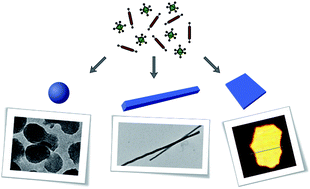Synthetic routes toward MOF nanomorphologies
Abstract
As metal–organic frameworks (MOFs) are coming of age, their structural diversity, exceptional porosity and inherent functionality need to be transferred into useful applications. Fashioning MOFs into various shapes and at the same time controlling their size constitute an essential step toward MOF-based devices. Moreover, downsizing MOFs to the nanoscale triggers a whole new set of properties distinguishing nanoMOFs from their bulk counterparts. Therefore, dimensionality-controlled miniaturization of MOFs enables the customised use of nanoMOFs for specific applications where suitable size and shape are key prerequisites. In this feature article we survey the burgeoning field of nanoscale MOF synthesis, ranging from classical protocols such as microemulsion synthesis all the way to microfluidic-based techniques and template-directed epitaxial growth schemes. Along these lines, we will fathom the feasibility of rationally designing specific MOF nanomorphologies—zero-, one- and two-dimensional

- This article is part of the themed collection: Integrating functionality into metal–organic frameworks

 Please wait while we load your content...
Please wait while we load your content...